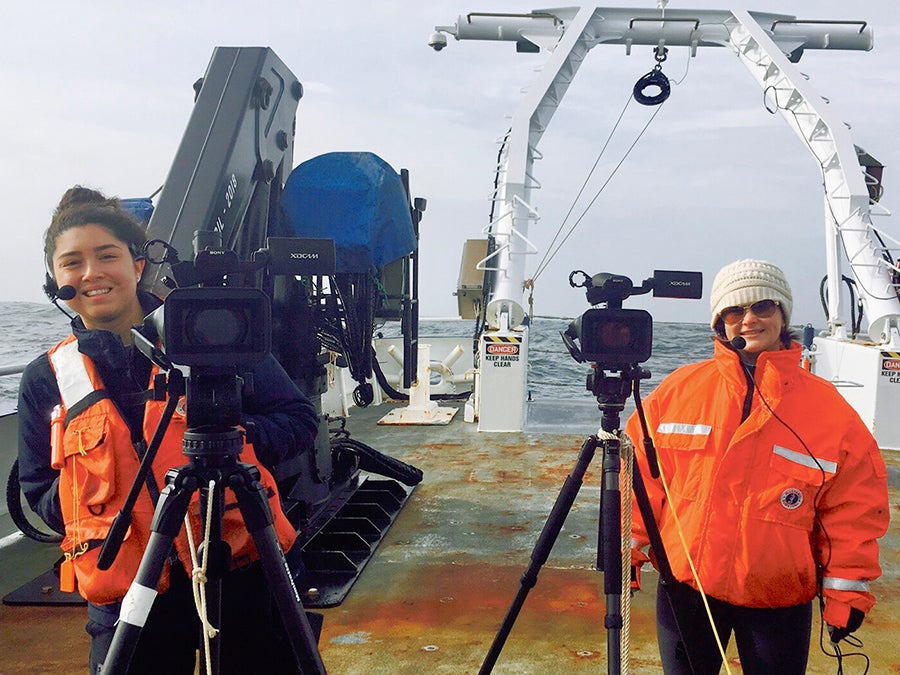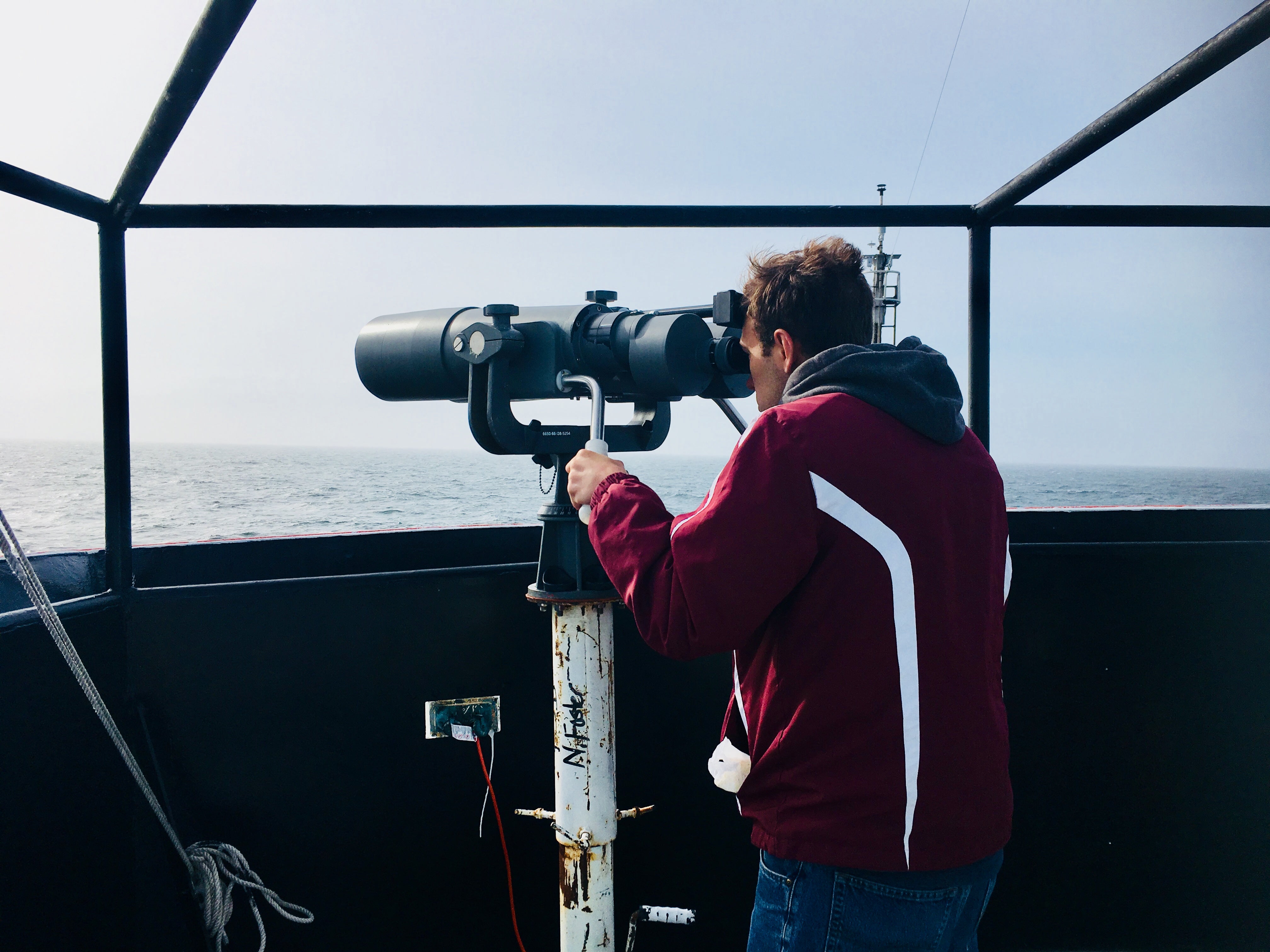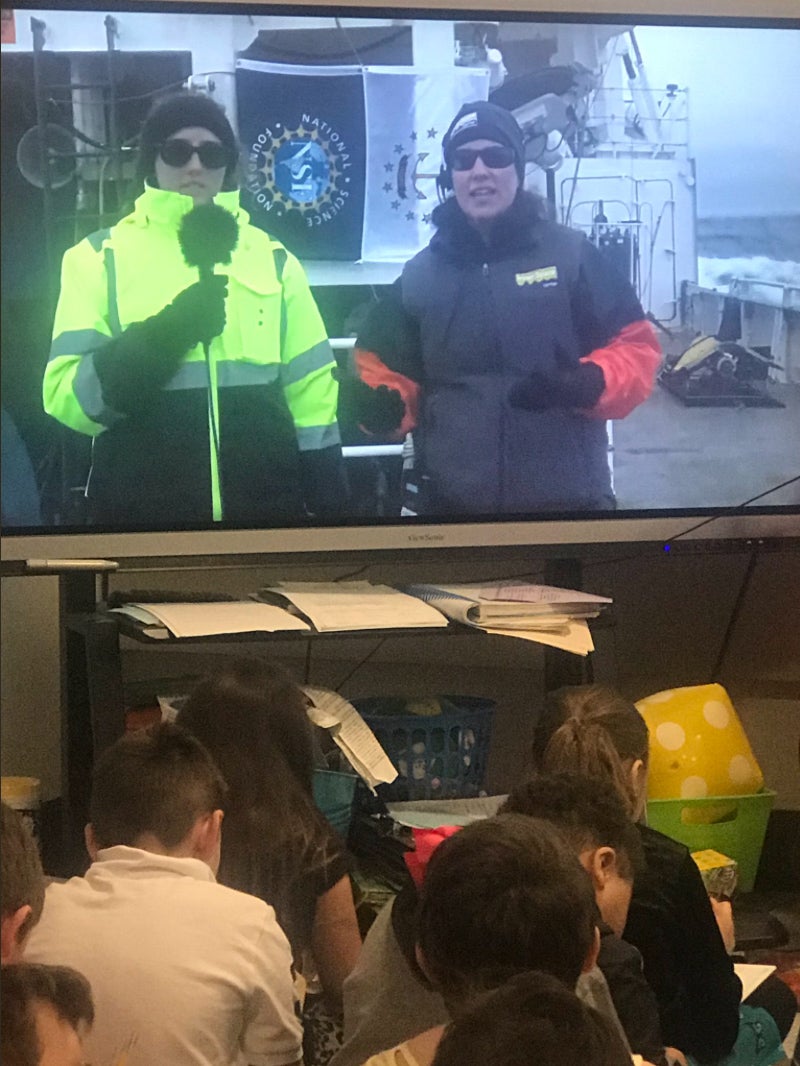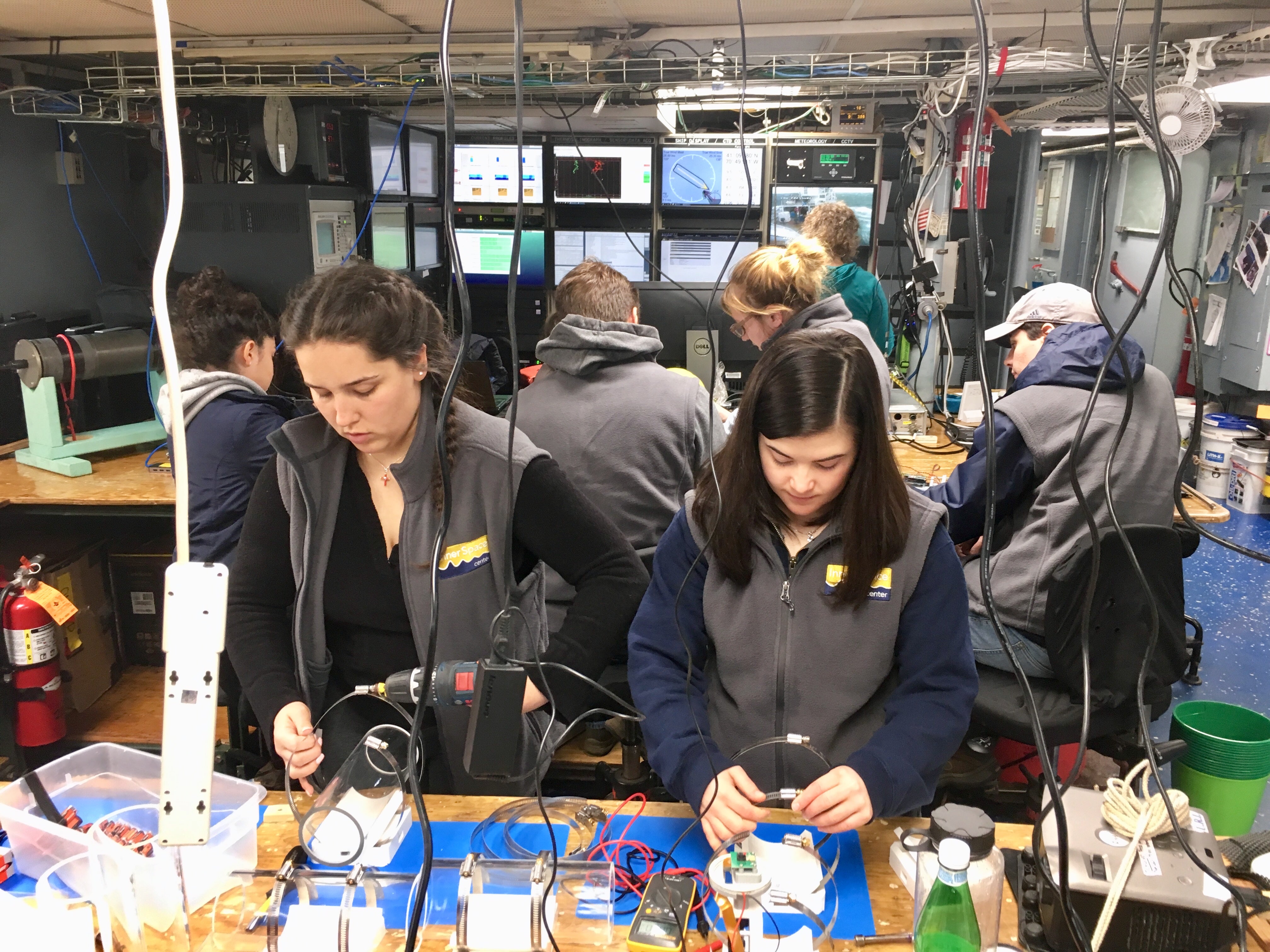In a unique experience, undergraduates conduct and communicate ocean science.
“It is important to expose students in mixed majors to science because it could provide a spark for those students that have not necessarily made a decision.”GSO professor Melissa Omand
“Blue skies and whales, baby!” exclaimed Nick Housman, a marine biology major at URI. The undergraduate student in URI’s Honors Program made this statement each morning as he was sailing onboard the Research Vessel (R/V) Endeavor as a participant in this year’s Coast and Shelf Investigations (“CSI: Oceans”) class.
The semester-long URI Honors Program course, which exposes URI undergraduates to the interdisciplinary nature of oceanography, is led by GSO professor Melissa Omand and GSO graduate student Chris Orphanides. The course culminates in a six-day expedition onboard GSO’s R/V Endeavor funded by the Rhode Island Endeavor Program. Students use oceanographic tools to examine and analyze whale-zooplankton-oceanography interactions that occur in waters of Southeastern New England. The students also gain science communication experience with GSO’s Inner Space Center (ISC), a one-of-a-kind national facility that works with cutting-edge technology to facilitate ocean exploration in real time. During the cruise, students become important ISC production team members, acting as co-hosts and cameramen for interactive Endeavor Live broadcasts. Spring 2019 marked the third year of this immersive undergraduate course, with eleven students taking part in the research cruise during April.
“The undergraduate period is a really interesting time in terms of possibilities that are open to students,” Dr. Omand said. “There is a lot of optimism and uncertainty. It is important to expose students in mixed majors to science because it could provide a spark for those students that have not necessarily made a decision.”
Studies across multiple disciplines show that hands-on, undergraduate research experiences extend classroom learning, where students develop a deeper understanding of content, associated skills and career path choices. The research cruise component to Dr. Omand’s URI Honors course is a prime example of undergraduate students experiencing and applying ocean science content beyond the classroom.
“It’s not like you just get to go do it [ocean science] for a few hours at a time…you live it,” Housman said at the end of the cruise. “It’s such a different experience than just going to class, taking notes and memorizing things.”
“As a non-major, I expected to get onboard and not be able to pick up anything I was being taught,” said Sarah O’Neil, an environmental economics major. “My apprehension and weariness quickly turned into a fun experience. And by participating in the broadcasts, and having to explain everything to a live audience, this helped to solidify what I was learning.”
The combination of conducting and communicating science is unique for a research cruise. Communicating science to broad audiences is important as the public must be able to understand basic science principles in order to make informed decisions. “It’s clear that there is a major disconnect between the general public’s understanding of what goes into science, why we do it, and why it is important,” said Omand. “If only I could bring everyone onboard one of my research cruises, they would definitely come away with a different perspective on what I am doing.”
Not everyone can participate in a research cruise, of course, but through the ISC’s telepresence technologies, individuals can connect with ships and scientists at sea in real time. Nearly 1,000 K-12 students were engaged during four, interactive Endeavor Live school group broadcasts that took place on Earth Day, April 22, 2019. Two Facebook Live events also took place on April 22, and have had nearly 2,000 views since the time of the event.
An important lesson for the students: everything doesn’t need to go as planned for a research cruise to be successful. Even though the weather was challenging and whale sightings were lacking, the students successfully deployed and tested a variety of new technologies, including time lapse camera systems that they built. The students also gathered oceanographic samples that will contribute to long-term data sets and will help scientists refine their research.
“That’s science and part of its appeal,” Dr. Omand said. “It gives you a chance to think of new things to do next time and find unexpected results that are way more exciting than what you originally anticipated.”
The author, Holly Morin, is a Marine Research Associate III at GSO’s Inner Space Center.




